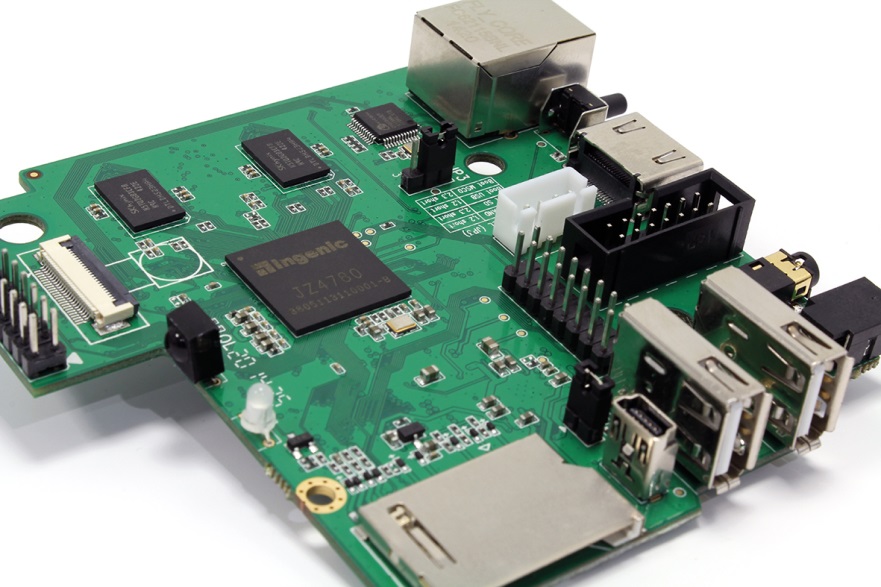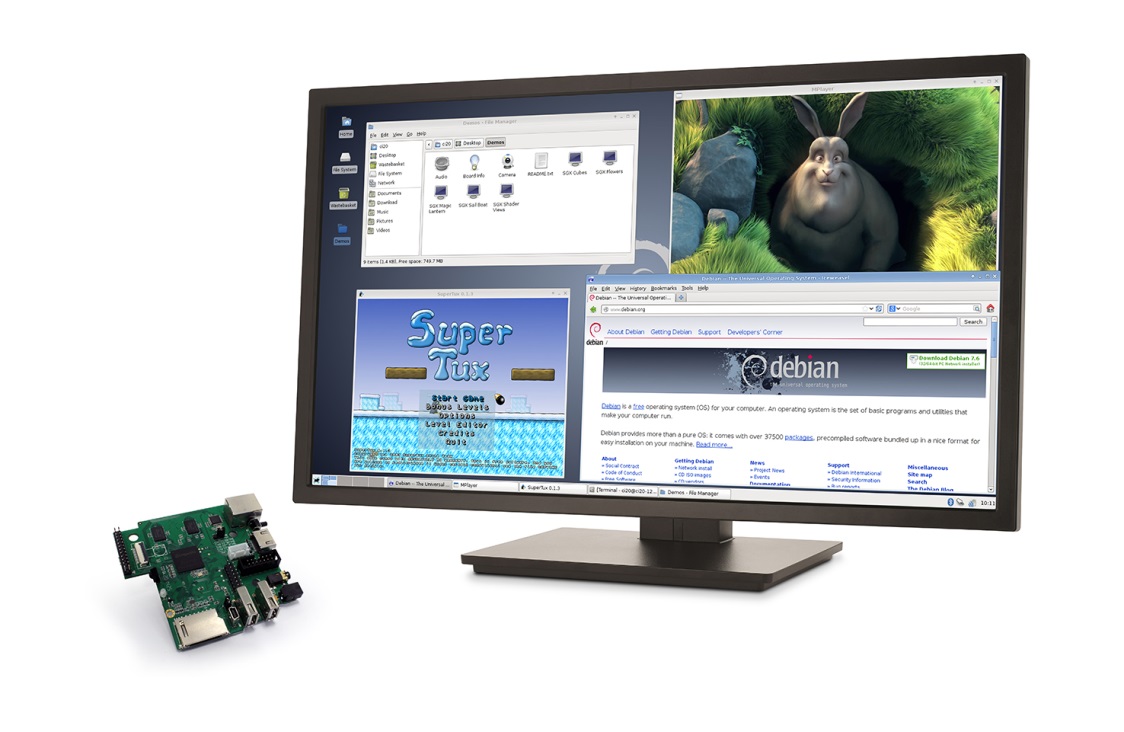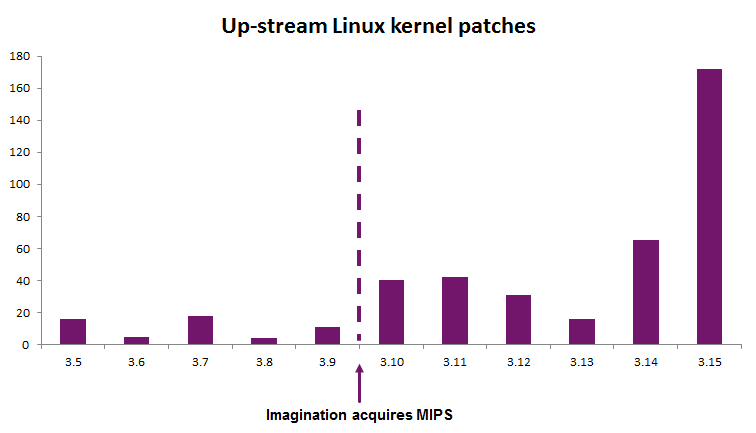
Editor’s Note: This is a guest blog from Imagination Technologies.
The Internet of Things promises to create a boom for the technology sector. Many semiconductor vendors are creating new and exciting solutions that will enable next-generation connected devices running different Linux distributions, for use across a broad range of applications from wearables to smart cars.
One of the main requisites for success in this market is offering developers early access to feature-rich yet affordable development platforms so they can prototype their code and optimize it for consumer products. Often enough, these boards also become consumer products in their own right – check out these DIY thermostats for example.
Developers looking for low-power, wireless-enabled IoT gizmos which integrated a MIPS-based chipset have already been able to choose between microcontroller-based systems from Microchip running real-time operating systems and applications processors from MediaTek and Qualcomm Atheros which typically run OpenWrt or other lightweight Linux distributions.
Introducing the MIPS Creator CI20 development board
Imagination Technologies today launched Creator CI20, a new development board that unites a dual-core 1.2 GHz MIPS32 CPU and a full suite of connectivity options (Fast Ethernet, 802.11 b/g/n Wi-Fi and Bluetooth 4.0) into an Internet of Things platform that runs a variety of Linux distributions or Android 4.4 KitKat and retails for $65.
 By integrating additional multimedia features like OpenGL 2.1 graphics and H.264/VP8 video decoding, Imagination is generating new opportunities for mobile and embedded developers, hobbyists, makers and enthusiasts looking to create more feature-rich applications.
By integrating additional multimedia features like OpenGL 2.1 graphics and H.264/VP8 video decoding, Imagination is generating new opportunities for mobile and embedded developers, hobbyists, makers and enthusiasts looking to create more feature-rich applications.
When initially previewed in August, the MIPS Creator CI20 development board caused quite a stir, appearing on the front page of several major publications; this naturally attracted a lot of attention from the Linux community and we’ve had thousands of exciting ideas pouring in from users all around the world. To date, Imagination has shipped many hundreds of boards for free to developers who are working on interesting projects.
Here is a short selection of how registrants plan to use their Creator CI20 boards (see more examples, below):
“I plan to add support for the Creator CI20 board to the Buildroot build system. Buildroot is a simple, efficient and easy-to-use tool to generate embedded Linux systems through cross-compilation.” – Phil Eichinger
“I’ve been hacking the Bionic libc (from Android) for several years to work on non-Android, and actually embedded and non-embedded general purpose Linux systems. Originally, I had tied this to Gentoo Linux, but now it’s fully based on autotools and should work on any Linux distribution. My project will focus on curating BSD-licensed, system-level open-source packages (e.g. Bionic with autotools) and also providing educational materials for the general public, and fast-track courses for start-ups. I am very excited to support MIPS with the Bionic libc on general-purpose, non-Android systems.” – Christopher Friedt
Building a strong Linux ecosystem around MIPS CPUs
This initiative is the latest in a series of Imagination investments in the Linux community. In October we became a member of the Linux Foundation alongside Altera, DataCentred and other international companies. Additionally, we’ve announced the establishment of the prpl foundation, an industry group that focuses on enabling next-generation data center-to-device, open-source and portable software on virtualized architectures. We have also announced a collaboration between Imagination and Oracle to port and optimize Java for MIPS CPUs.

A lot of the work we’ve recently done has been focused on optimizing the Linux kernel for the latest features of the MIPS Warrior family. This includes adding new instructions and providing fixes and updates to support architectural specifications such as EVA (Enhanced Virtual Addressing), SIMD (Single Instruction Multiple Data), CPS (Coherent Processing System), GIC (Global Interrupt Controller), VZ (Virtualization) and others.
We are very excited to see how Linux developers will use the new MIPS Creator CI20 development board. Joining the Linux Foundation offers us exciting opportunities to streamline the kernel development process, collaborate with like-minded partners and provide support for the vibrant open source community that continues to build around the MIPS architecture.
Working on a new Linux-related project for MIPS? Go to http://store.imgtec.com to order your Creator CI20 development board now.
More ways to use the Creator CI20
“We would like to evaluate the board as an alternative to other mainstream SBC systems. MIPS Creator CI20 would be used to collect environmental sensor information such as temperature, humidity, etc. around an MRI device for proactive maintenance and prevention of major faults. We feel this MIPS-based board might provide us a way to work around vendor lock in.” – Stealth start-up, USA
“I’ve been testing small form factor, low power alternatives for mobile wireless monitors on television production sets. Existing products on the market are either astronomically expensive, or don’t quite live up to what we need them for. I feel like the MIPS Creator CI20 board would make a great testing ground for what I have in mind. I’ve also been playing around with developing a fork of XBMC that’s more tuned for professional video codecs and environments. This would be the perfect platform for screening rooms for producer to view materials in, without the hassle of a traditional computer. There’s so much untapped potential in the professional video market and there’s little to no competition for what is out there today. I hope to hear back soon!” – Christopher LaBonty, video editor and IT consultant
“Limelight Game Streaming is a free open-source project to bring NVIDIA’s GameStream technology to as many devices as possible. We’ve successfully brought GameStream to several desktop PCs and Android devices and now plan to use the MIPS Creator CI20 development board for two of our current ports. Our Android port already has native libraries for MIPS32-based processors; it’s been tested in the Android MIPS emulator but never on a real device. A MIPS-based device that can decode 1080p at 60 fps video is a very cool prospect and having the hardware in hand allows us to tune our use of Android’s MediaCodec framework to produce the lowest latency video. We also plan to port Limelight to Creator CI20. Recently, we’ve been extending support to other small form factor Linux devices; getting Limelight running on Creator CI20 under Debian would provide a better option for users that want a small streaming device.” – Cameron Gutman, Limelight Game Streaming
“I run robotic and programming classes in a number of schools and universities in Shropshire, England. I was absolutely over the moon when I was offered the incredible MIPS Creator CI20 dev board. I have been using it to show off and teach young child the art of robotics and computer programming. Imagination has made quite a few people (young and old) very happy. Thank you for even proposing to support and develop grass roots, home brew computer science.” – Dr Ashley A. Green, Robotics and Space Educator
“I work as computer lab technician for a college in Québec and part of my job is to find new learning tools for our students in computer sciences. The MIPS Creator CI20 development board is the perfect Linux learning environment, and we are very happy to have a real world example of the MIPS architecture in our hands. Moreover, we just started teaching Android app development, and emulators are slow. This board is a much better solution than buying expensive tablets and phones! On a personal level, I’m also interested in the HTPC capabilities of this single-board computer!” – Patrice Boudreault from Cégep de Jonquière, Canada
“I’ve been using Linux on a daily basis since 2005 and I do electronics in my free time. I plan to use the MIPS Creator CI20 board as an IP PBX (mostly with Asterisk, Opensips and Freeswitch) as I worked some year ago as a VoIP engineer. Since the board delivers optimal power consumption and offers built-in Wi-Fi, I plan to hook it up to some solar panels and create an IP PBX for smaller companies that would run when you put under direct sunlight (with a battery backup). Maybe it could even get a small OLED display for major parameters like simultaneous calls, free disk space, free memory, CPU utilization.” – Anonymous maker, Hungary
“I am currently a student in course at Arizona State University during which the students learn and use MIPS assembly language. Usually students will use simulators such as SPIM or MARS to model the behaviour of real-world, MIPS-based devices. I am very interested to see how RISC architectures, which have usually been confined to the embedded space, can evolve and grow into the desktop market. These CPUs have finally become powerful enough to compete with classic Intel CPUs in more than just performance per watt. I also plan to use the MIPS Creator CI20 board for Linux development and compare it to various other embedded development kits. In the future, I expect that I’d be able to use the MIPS Creator CI20 as either a complete replacement for my Raspberry Pi (currently running an Airplay and Mumble server) or as an HTPC – I’m still exploring possibilities, which are, of course, endless.” – Omri Mor, Arizona State University


